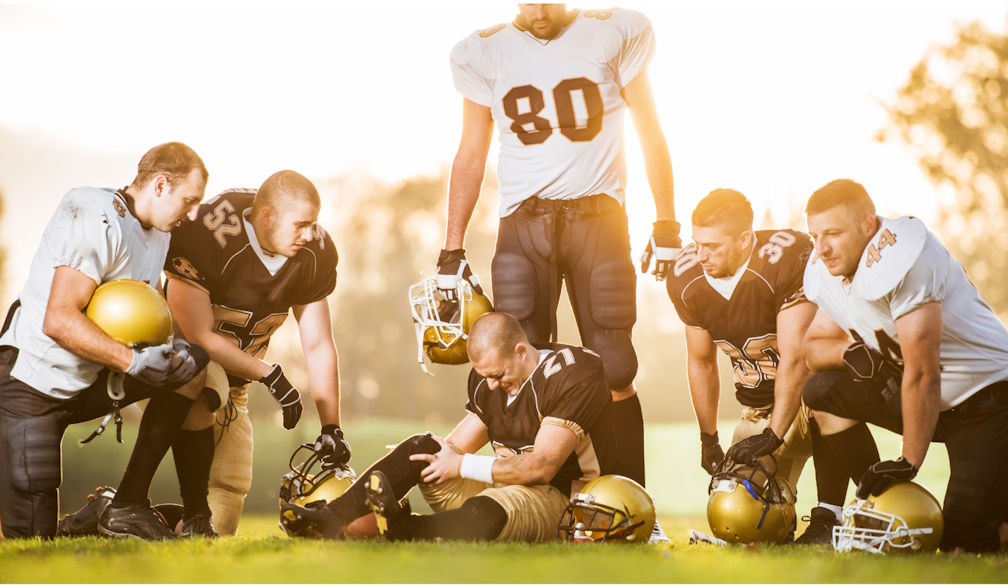Do repetitive head injuries really cause the degenerative brain disease CTE? New research questions the link
- Written by Lauren Fortington, Senior Research Fellow | Injury Prevention & Sports Medicine, Edith Cowan University

Concerns about the long-term impacts of concussion and head injury have become prominent in recent years, particularly among participants and stakeholders[1] of contact and collision sports.
Many people have been left wondering about the risk of head injury in sport and whether it is safe to continue to play.
People are especially worried about what is commonly known as CTE (chronic traumatic encephalopathy).
A 2022 publication[2] claimed repetitive head impacts in contact and collision sports were the cause of CTE.
This article has been influential, with other researchers citing the work and several people using it as evidence in an Australian Senate inquiry into concussions[3] and repeated head trauma in contact sports.
The headlines from that article – stating a definitive cause had been established – prompted us to take a deep dive into the work.
The result of our investigation has recently been published in the journal Sports Medicine[4].
The grey area of chronic traumatic encephalopathy
CTE refers to a pathology where microscopic changes in tissue can be seen by neuropathologists when looking at slides from autopsied brains.
While attempts have been made to further define CTE, there remains debate about what the different observed changes in the brain mean.
The challenge of agreement on CTE was highlighted in a 2021 publication[5] when the United States’ national institutes of neurological disorders and stroke, and biomedical imaging and bioengineering, brought experts together to establish agreement on how to assign cases to one of four proposed “CTE stages”.
Among eight neuropathologists looking at the same tissue slides, three different stages of CTE were reported for 11 of the 17 cases, and all four stages were reported against one case.
This means among experts, the definition of CTE is not agreed on, and there is not yet an accurate way to measure it.
Signs and symptoms in people later identified as having CTE have been described as similar to neurodegenerative diseases, such as Alzheimer’s disease or dementia.
Clarity on causes of these other diseases is also largely unknown despite years of investigation by researchers and clinicians.
A Lancet standing commission[6] recently presented an update on dementia prevention intervention and care. In it they describe 14 potentially modifiable risk factors for dementia, including traumatic brain injury but also education, smoking, obesity, alcohol and physical inactivity.
It is important that research into CTE also considers a range of potential contributory factors, such as those above for dementia[7], and not just focus on one factor (such as repetitive head impacts in contact sports).
What are repetitive head impacts?
The authors of the 2022 review that we investigated defined repetitive head impacts as “the cumulative exposure to recurrent concussive and subconcussive events.”
It is not clear what was meant by a repetitive head impact or subconcussive event, and measuring them accurately is also difficult.
As an example, researchers might ask injured athletes or their relatives about their history of sport and any head injuries they sustained, as well as how long they played and the level they played at.
These questions are often asked many years after participation, and therefore rely on memories of past events that can be hard to recall.
While these methods can help understand a little about athletes’ experiences, the accuracy of details is questionable, which is why they are unsuitable measures for causal claims.
We are learning more about athletes’ exposure to head injury by collecting data at the time of injury (such as “smart” mouthguards[8]), in the lead up to a potential injury (such as through video analysis[9]) or shortly after an event (such as reporting to a medical doctor[10] for review).
Studies making use of findings from these types of investigations will be helpful to better understand long-term health outcomes in relation to concussion or repetitive head impacts.
What our research found, and next steps
In our review, we conclude it is incorrect to say repetitive head impacts are the cause of CTE on the basis of the evidence presented in the 2022 article and what we know about this issue to date.
There is not yet widespread agreement among scientists or clinicians on the definitions of repetitive head impacts or CTE, and neither can be accurately or consistently measured.
Our findings do not mean repetitive head impacts are not a potential contributory factor to any long-term changes. Rather, the current evidence isn’t suitable to be making any conclusions.
More rigorous studies, with agreed definitions and measurements, are needed to explore a wide range of risk and protective factors.
It is important the research community is cautious about how they communicate findings.
The public should recognise the science is far from being well established.
The public should also recognise that for the everyday athlete, the risks of concussion are not the same as those of a professional athlete[11].
Sports that have risks of head injury continue to make changes to protect athletes from harm through new measures for prevention, better identification of concussion and better management when they do occur.
The vast majority of people involved in contact sports live happy, fulfilling lives without neurological issues.
Keeping physically active[12] through sport remains an important part of a healthy lifestyle and is protective against many long-term, chronic diseases.
References
- ^ participants and stakeholders (theconversation.com)
- ^ 2022 publication (www.frontiersin.org)
- ^ Australian Senate inquiry into concussions (www.aph.gov.au)
- ^ Sports Medicine (rdcu.be)
- ^ 2021 publication (academic-oup-com.ezproxy.ecu.edu.au)
- ^ Lancet standing commission (www.thelancet.com)
- ^ for dementia (www.abc.net.au)
- ^ “smart” mouthguards (www.smh.com.au)
- ^ through video analysis (passport.world.rugby)
- ^ medical doctor (www.concussioninsport.gov.au)
- ^ professional athlete (bjsm.bmj.com)
- ^ Keeping physically active (www.who.int)

















